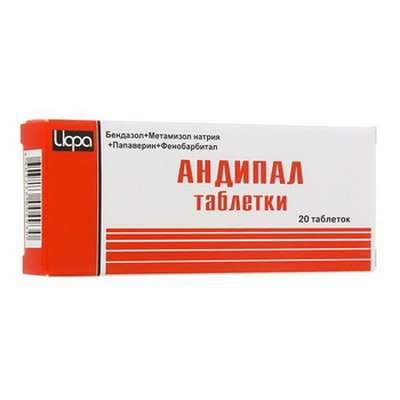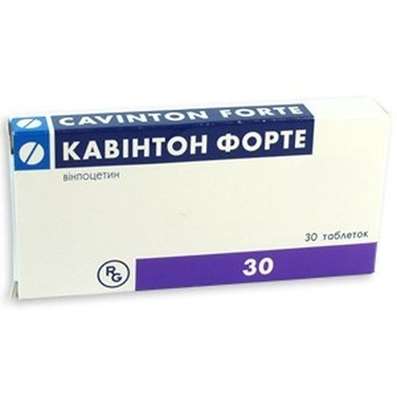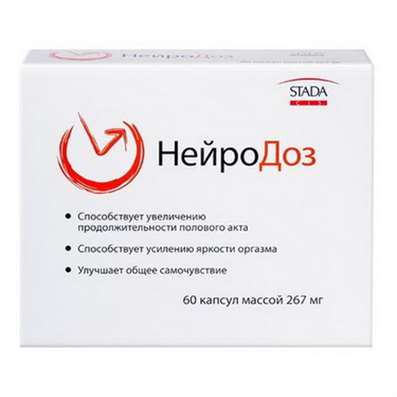Why did Maria Sharapova use Meldonium?
02 May 2017
Meldonium is definitely a drug in the news these days. Originally an obscure Eastern European (Latvian) heart medication, it was really just a matter of time before one of the many athletes using it for its performance-enhancing qualities was outed. (I use the word "outed" rather than "caught", because it was not technically against the rules to use it until recently.)
How PED's like Meldonium are used and why athletes take them:
While there is no way to measure the effects of Meldonium directly on a player like Maria's competition results, this is also true for all performance-enhancing drug use. Most PEDs, including steroids and EPO, are used as training aids, not as performance enhancers in competition. This is why in-competition testing is mostly useless for catching dopers, except when they make careless errors. There is no drug that suddenly makes you a higher level athlete, but there are drugs that provide assistance in training to become one. Meldonium is one of those. And that is the reason that 724 out of 4316 Russian athletes tested were found to be using it in 2015 (before it was prohibited). That's almost 20%! In other words, almost one in five Russian athletes (in all sports) showed traces of Meldonium in their system in 2015. They are certainly not all suffering from the various marginally-relevant health conditions that Maria has cited for herself.
Here's how Meldonium works and why so many athletes were on it:
Meldonium "demonstrates an increase in endurance performance of athletes, improved rehabilitation after exercise, protection against stress, and enhanced activations of central nervous system functions", according to the journal Drug Testing and Analysis. That last bit about CNS function, in layman's terms, means that in addition to the other performance- and training-enhancing qualities it has, it is a stimulant. And just about all stimulants other than caffeine are banned under the doping codes. So it's an effective PED for multiple reasons and via multiple modalities.
Like EPO, such a drug allows athletes to train harder and longer, and to recover faster after they do. It aids circulation, and the transport of oxygen to cells that need it. It also gives you added energy. The profile of Meldonium is pretty much a bullseye for what athletes look for in a performance enhancer. It's a classic PED. The only reason it was off-schedule is that the doping authorities weren't aware of its use as a performance enhancer until a little over a year ago (at which point they scheduled it for observation). But prior to and since its recent ban, there had been a number of scientific papers that had called it out as a performance enhancer.
Why does Sharapova say she took the drug in the first place?:
In her press conference on March 7, Sharapova said that she was “given this medicine for several health issues that I was having back in 2006. I was getting sick a lot. I was getting the flu every couple of months. I had irregular EKG results. As well as indications of diabetes with a family history of diabetes." Most of those conditions are just general complaints that certainly would not be addressed by this type of drug, or any drug. And Meldonium doesn't really address the pre-diabetic symptomology either, with metformin being the usual first-line choice for that type of condition, even in Eastern Europe. However, in countries where it is approved for use at all, Meldonium is intended to improve tolerance for exercise; or more literally, as a performance enhancing drug. Its additional use is to reduce the effects of angina attacks among elderly patients with serious coronary heart disease (i.e. not Maria).
How does Maria explain what happened with the failed test?
Maria presented her taking of the drug after it was banned as a careless error on her part. She has claimed the reason that she continued to take Meldonium after the ban was that she failed to look at the new list of banned substances (which says she received a link to on December 22nd, 2015), and didn’t know it was on that list. However, it seems very surprising that no one on her team, or associated with her, would have looked at the list, considering that a large percentage of elite Russian athletes were on the drug, and most major sports had publicly announced its ban effective at the start of 2016 in keeping with the WADA guidelines. It's one of those stories that would have been hard to miss, especially for a Russian athlete.
Why was Meldonium (Mildronate) only recently added to the list of prohibited substances?:
The fact that Meldonium wasn't known as a performance-enhancing drug was NOT because it is ineffective or irrelevant as a PED, as some people have tried to suggest. It's fairly unequivocal that the drug is exactly the sort of substance that WADA and the TADP are trying to ban. It was so slow to be scheduled mainly because it is an obscure Latvian drug that isn't even approved for medical use in the U.S. or most of Western Europe, and there's no way anti-doping bodies can keep track of every drug that exists. It basically flew under the radar for a while. But even its own prescribing label mentions its use for addressing "Decreased working efficiency, intellectual and physical overstress in sportsmen".
The challenge faced by anti-doping programs:
The problem with the entire practice of anti-doping regulation is that the authorities are basically always playing catch-up. Competitors find drugs that give them an edge, and then WADA and the other watchdogs eventually catch on, and schedule them. Additionally, the anti-doping bodies have to find ways to detect the use of these drugs, which isn't always easy, and can be time consuming. This game of cat and mouse has been going on for decades in many sports. The athletes are always one step ahead, and the authorities are simply trying to keep up. As soon as WADA figures out how to regulate one substance or practice, the competitors figure out a new one, or a way around the testing. So basically the technology of cheating always precedes the technology of detection by a bit. And in that time, players can find new ways of getting an edge, whether by changing drugs, evading detection, or simply exploiting holes in the system to avoid having to be tested at the "wrong time".
The further challenge is that the governing bodies of many sports (including tennis) don't really want their players to be caught. It's against their best interest. While they want to maintain the impression of a clean sport, it is much more important to them to maintain the appearance of integrity in the game and its biggest stars. Sport is big business, and cheating and scandal are very bad for this business. Sure, if someone is caught red-handed, the authorities will take action, but it is honestly one of their worst nightmares. You can bet that everyone at the WTA is squirming right now as the whole Sharapova episode plays out. And you can also bet they are very eager for everyone to buy into Maria's excuse, so that they can greatly reduce the severity of her punishment. Every once in a while, they'll happily make an example of a lower-ranked player to keep up the impression of vigilance. But as we know from Agassi's case, they really do what they can to keep the game's cash cows out of trouble as much as possible. (Even Odesnik, a repeat offender, had to be caught by government border authorities, and was never actually snared by the testing program. If it were up to the testing regime, he would still be playing today.)
Can players ever be caught?:
Generally, a player has to slip up to get caught. They know the rules, and are aware of how to break them. It usually takes an actual mental error (much like the game itself, ironically) or miscalculation to be caught doping by the existing programs. A major gaffe, like the nabbing of Wayne Odesnik in possession of banned substances, is really the only way for a player to be nailed without recourse. More often, a player can claim some kind of extenuating circumstance, and get the punishment reduced to almost nothing. This happened for several players a few years ago who claimed to have ingested banned substances via tainted over-the-counter nutritional supplements, for example. (And also in one colorful case in which the player claimed to have acquired traces of the substance by making out with someone in a club who had ingested the substance prior.) Further, if they miscalculate or mis-time things and get scheduled for a rare out-of-competition test while in the "on" phase of their drug use, they still have many ways to escape taking the actual test, such as by exploiting the multiple strike system, and the entry of a "zero value" rather than a violation on their record.
So what probably really happened with Maria?:
While Maria's justifications seem on the surface to make this look like a careless "honest" mistake by someone taking a prescribed drug, that is probably only true in the most technical sense. It is highly unlikely that she was taking the drug in an ongoing way for the reasons she stated. The real question is how complicit she was in its use. If she was unaware of its performance-enhancing qualities, then someone else in her camp must not have been, because it is not the first drug of choice for any of the conditions she claims her use relates to. When it is prescribed on-label, it is essentially never given on an ongoing basis, as Maria claims for her use. It is intended to be prescribed for a 10-14 day course for most uses. And the longest on-label use is generally capped at 6 weeks. Not years. And certainly not 10 years. Even when use is ongoing or repeated, it is not intended to be continuous or preventative. In longer term use, it is usually given as part of a combined therapy (which Maria was not doing) for 4-6 weeks as a treatment for fully developed cardiovascular illness (which Maria does not have). It is not a general preventative, but a drug used to address specific bouts and disturbances of a cardiovascular nature. Here is a more thorough description of its prescribed uses
In general, athletes are often managed by their handlers in many areas of what they do. From what string to use in their racquets to what sports drink to imbibe, elite athletes depend on their team to advise them correctly. How much awareness of these items the athletes themselves have can vary quite a bit. But that does not remove the responsibility from them to control these aspects of their careers. Certainly, there are many cases where a trainer, doctor, physio, or other adviser just hands a player something and tells them to take it, but any player at that level knows the rules and that you can't be cavalier about doing so. Certainly someone of Maria's experience and level knows better. And that suggests that this was probably more than a simple oversight or technicality.
While it will be essentially impossible to prove in a court, it seems highly probable that Maria was, either wittingly or unwittingly, taking Meldonium for its significant performance-enhancing properties, and not for medicinal reasons as described. Further, while it's possible that her being caught was the result of an accidental oversight on her own part or that of her team, her use of a banned drug wasn't just a technicality in changes in the anti-doping code. It was almost certainly a serious violation of exactly the type that the TADP is designed to punish, and is being played off as an innocent error for PR reasons and to minimize her punishment.
You can also see more on how Meldonium works, and why it's highly unlikely that Maria Sharapova was taking it for the reasons she stated.
Pharmacological Properties of buy Meldonium for sale.
Pharmacodynamics. Mildronate is a structural analogue of gamma-butyrobetaine, a substance contained in every cell of human organism. Under the conditions of excessive stress meldonium restores balance between oxygen supply and its demand in cells, and removes toxic metabolic products accumulated in cells protecting them from damage; it also possesses tonic effect. In the result of its application the organism receives the possibility to withstand stress and quickly restore its energy reserves. Thanks to these properties Mildronate is used for treatment of various cardiovascular system disorders and brain circulation impairment, as well as for improvement of physical and intellectual working efficiency. Decrease in carnitine concentration results in intensification of synthesis of γ-butyrobetaine which possesses vasodilating properties. In case of acute ischemic damage of myocardium, meldonium decelerates formation of necrotic zone, and reduces the duration of rehabilitation period.
In case of chronically impaired cardiac function, it improves contractive ability of myocardium, increases tolerance to physical stress, and reduces frequency of stenocardia attacks. In case of acute and chronic ischemic disturbances of cerebral circulation, it improves blood circulation in ischemia focus, and stimulates the redistribution of cerebral blood flow for the benefit of ischemic area. The drug eliminates functional disorders of nervous system in patients with chronic alcoholism in case of abstinence syndrome.

 Cart
Cart





